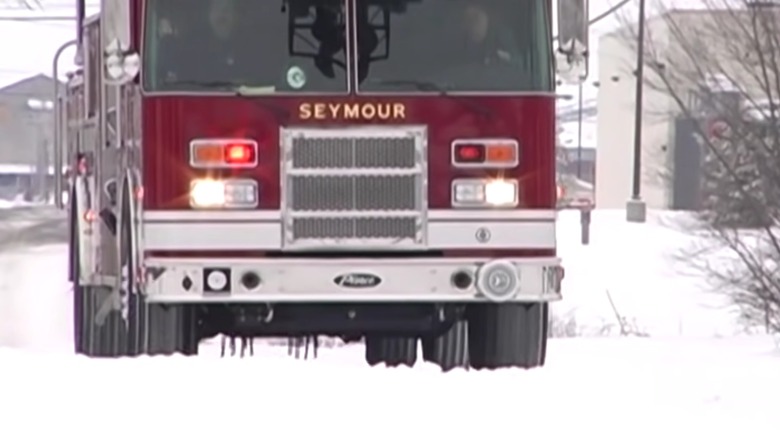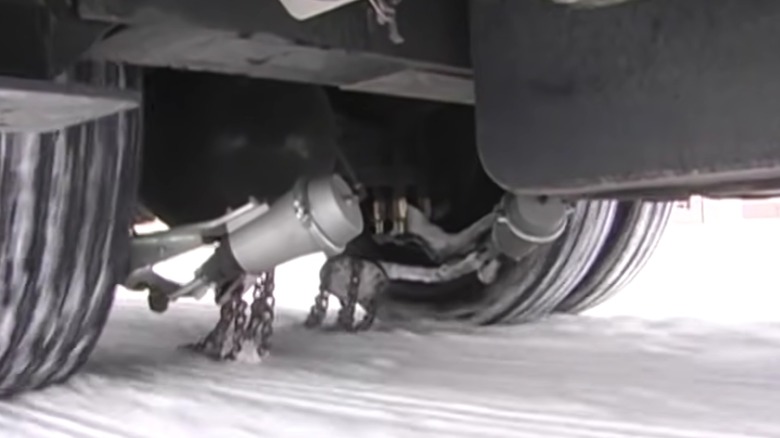Why Do Fire Trucks And Ambulances Have Chains Hanging Underneath?
When it snows and the roads get icy, everyday people have to put tire chains on their cars. If they're unlucky, they end up noticing when it's too late and have to go through the hassle of pulling off to the side of the road to put them on when it's almost too cold to function. Those chains give a car better traction so the tires don't spin in place and the car stops when intended. It's a serious driving hazard to drive in icy conditions without tire chains.
But it's not just civilian vehicles that need tire chains. If you live where it reaches freezing temperatures, you've likely noticed some chains hanging from a fire truck or ambulance's undercarriage. Just as when a fire truck honks three times, everything has a reason, and those dangling chains serve the same purpose as conventional tire chains. Unlike conventional tire chains, however, firefighters and paramedics don't have to exit their vehicles to wrap them around their tires. It's an automatic system that's engaged with the simple press of a button on the dashboard, as easy as flipping on the sirens.
That can literally mean the difference between life and death for somebody in an emergency. The automatic chain system ensures the vehicle arrives on the scene safely, not suffering an accident itself. And it lets firefighters and paramedics activate the system while they're driving, saving crucial time when responding to a call.
How the automatic chain system works
Wrapping wheels in tire chains can be a time-consuming process, as anyone without tires that have retractable snow chains can attest. When your arrival can be the difference between life and death, fire trucks and ambulances don't have time to waste. When the driver becomes aware of dangerous road conditions, they simply flip a switch to engage the system. The hanging chains are attached to a rubber wheel of their own and when that switch is flipped, a pneumatic cylinder lowers the chainwheel.
It presses against the tire sidewall, which gets the chains to spin in sync with the tires. Instead of the chains being wrapped around the tires, centrifugal force throws them between the road and tires, creating the same effect as conventional tire chains. While the system will ensure the emergency-services crew gets to the call safely, it will be slightly delayed since they can't initiate the system if they're driving faster than 25 mph and they're unable to drive faster than 35 mph while it's engaged.
The beauty of this system is manyfold. The driver doesn't have to leave the vehicle to initiate it, and the system provides traction whether the vehicle is driving forward or in reverse. It reduces stopping distance by as much as 10% compared with studded snow tires, can help prevent wheels from locking up, working well with antilock brake systems, and will work on ice and in up to 6 inches of snow.

